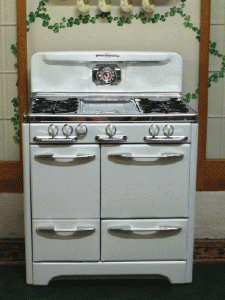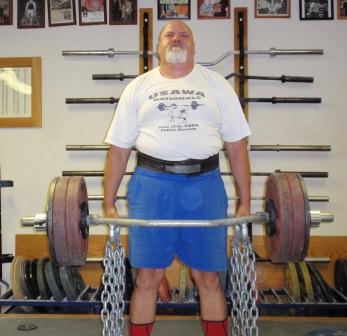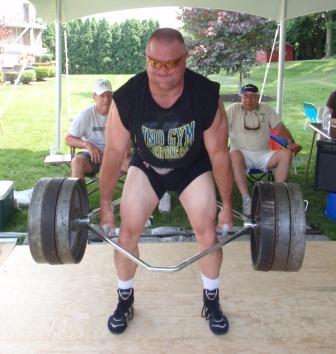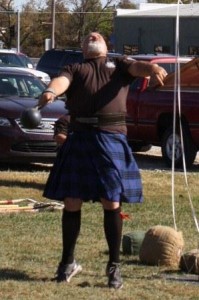Hot Stove Workout
by Thom Van Vleck

A Hot Stove is where work gets done, and managing what's important means putting it up front or in back....managing your workout is the idea of this article.
I just wanted to share a workout plan I have for this winter. As most of you know, I do a lot of throwing in the Scottish Highland Games. Winter time for me is “off season”. It is a time where I am trying to build strength again. I also want to increase my conditioning and flexibility. In season, I do a lot of throwing, and in the process I get pretty burned out on it by the end of the year and it’s good to get back in the gym for some old school training.
The first thing I need to tell you is that there is NOTHING I enjoy more than the adrenaline rush that comes with heavy lifting. I get a high that will last for days. Any hardcore lifter will know what I mean, that moment when the weight starts piling on and the goosebumps pop up on your arms and a chill runs down your spin and it’s “GO TIME”! I love it. But, as I get older I have to deal with a couple of factors: Recuperation and Injuries.
Because of the increased recuperation time that comes with age and the injuries my body has endured, I can’t hit the max attempts like I did 20 or 30 years ago. I have to be smart! Part of the problem is that I want to work my entire body at once and be cycling into heavy lifts that involve my entire body. So this year I came up with my “Hot Stove Workout”.
The “Hot Stove Workout” has my hitting the big numbers on a particular lift during my “Big Saturday” workout. This is when I’m hitting that adrenaline rush and feeling good about moving some heavy iron (heavy for me!). This is what I call my “Front Burner” exercise. I am also using that time to work on my Erector Spinae and hamstrings using the Reverse Hyper, swiss ball (leg curls), and leg curling on the Reverse Hyper (a little exercise I stole from Al Myers).
Then Sunday is my conditioning day. Right now I’m doing football agility drills with my son, who’s playing football in school, medicine ball drills, and tossing the pigskin around along with hitting the volleyball back and forth with my wife who’s on a volleyball league.
Monday is a day when I work on Grip, Neck, and Abdominal exercises, really going crazy on them. Then my “Big Tuesday Workout” I hit two exercised that are my “Back Burner” exercises. They are on their way to being “Front Burner” exercises and when one gets moved up, then another takes it’s place…destined to eventually make it to the “Front Burner”. I always have three exercises and I make sure I have one that’s a leg movement, one a pressing movement, and another that’s a pulling or back movement. It is also this day that I do any assistance work.
I then finish off with a set of 100 on the leg press. These are very explosive, I drive up on the toes, and I usually have to crawl out of the gym after that. By then I’ve worked out for 4 days and then I have three days to rest and get ready for the next Saturday. I enjoy this workout very much and for now, that’s all I need to keep me lifting. It doesn’t matter how great the workout is, if you don’t enjoy it or it doesn’t motivate you, then it’s the same as worthless.
By keeping a couple exercised on the back burner, using less weight, I’m able to be ready to switch them to the front burner. That way I’m always hitting something heavy on Saturday and not having to build up over time for a big lift. By lifting only once a week with over 90% poundages, I am able to recuperate and stay fresh. I hope my workout has given you some ideas for your own training. Everything I know about training I learned from someone else!!!!


